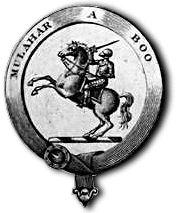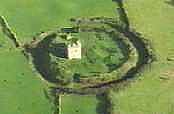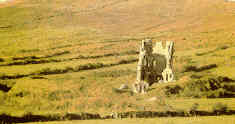John
fitz Thomas
|
 John fitz Thomas, a member of the ruling Geraldines and grandson of
Maurice fitz Gerald, was born into an Ireland where the English lords consolidated their
territories through marriage. As Lord of Desmond, John married the daughter of
a local Norman noble and established the Fitzgerald Lordship of Decises. John
fitz Thomas continued in this way to build his power, founding Tralee about 1216
and the Dominican Friary in 1243. He buried there in 1261 after his death at the Battle of Callan.
John fitz Thomas, a member of the ruling Geraldines and grandson of
Maurice fitz Gerald, was born into an Ireland where the English lords consolidated their
territories through marriage. As Lord of Desmond, John married the daughter of
a local Norman noble and established the Fitzgerald Lordship of Decises. John
fitz Thomas continued in this way to build his power, founding Tralee about 1216
and the Dominican Friary in 1243. He buried there in 1261 after his death at the Battle of Callan. |
Confers Knighthood
before 1261 |
John fitz Thomas Fitzgerald passed his power on to
his sons, some of whom were born illegitimately of liaisons with the wives of Irish
chieftains.
To
three of his five sons, he granted hereditary knighthoods, the only three ever
recognized in Ireland or Great Britain. These were the Knight of Glin, the
White Knight, and the Knight of Kerry from whom our Fitzgeralds descend.
|
Knights of Kerry
in Listowel
|
"The long association between this family and Listowel is recalled in
the name of the scenic stretch of land along the southern bank of the Feale,
near the town, which is known as the 'Knight of Kerry's' or Ballinruddery, the
Town of the Knight. The names are appropriate since, in earlier times, the
Knights of Kerry intermittently occupied the partially ruined castle situated
here and, later, until c.1870, lived in a beautiful, thatched,
seventeenth-century mansion which stood nearby and ... which ... was re-named
Woodford ... by the 18th century" (39)
|
Knights of Kerry
in Dingle

Maurice fitz Gerald,
Knight of Kerry,
Coat of Arms
|
The Knights of Kerry lived in Dingle. Shown below are two views of Rahinane Castle, once home of the knights.
This castle was the residential fort of the chieftains of the locality before the arrival of the
Normans. The Fitzgeralds constructed a number of 'castles' (in reality fortified
tower-houses) in the western part of the Dingle Peninsula, examples of which survive at Gallarus, Minard and at the family seat
of Rahinane. The Knight of Kerry lived there until Cromwellian times. All the Fitzgerald castles were either captured or destroyed by Cromwellian
forces around 1650. (41)
|

|
|

|
|
Rahinane Castle, Dingle Peninsula |
|
Knight's large
estates dwindle |
It would seem that the property of the Knight[s]
of Kerry remained considerable until at least the second half of the 17th
century. Thus we know that John FitzGerald, 12th Knight of Kerry, successfully
petitioned the House of Commons in 1665 for the return of property which he
had held near Dingle and in the baronies of Clanmaurice, Iraghticonnor,
Trughanacmy and Magunihy and which had been vested in the crown under the Act
of Settlement. The family seems to have lost much of its Kerry property
between this time and the middle of the 18th century. (40) |
Patrick Fitzgerald
brother of 12th Knight
mid-1600's |
Our Fitzgeralds are related to John FitzGerald's brother Patrick
FitzGerald. Patrick FitzGerald's son "John FitzGerald (1670 -- 1745)
held a commission in the Irish Catholic army of King James II, on whose defeat by William of Orange at the Battle of the Boyne on July 12, 1690, he fled
with a brother officer named Maguire and a man-servant of his own name from persecution in Dublin to the Maguire's County Fermanagh, making the journey in a single night. Because of the severe anti-Catholic Penal Laws, he became a Protestant and lived the latter part of his life at Drumcose, a property in Co. Fermanagh, close to Castle
Hume" Website of James Fitzgerald (42) |
|
See historical summaries: People
in Ireland in 1700, Early
1700's
|
James
FitzGerald builds
Clonavilla House
mid-1700's |
John FitzGerald's son James FitzGerald (1715 -- 1789) probably moved the
family to the parish of Clones in County Monaghan, and built
a new home called Clonavilla. Although the house was destroyed in the 1970's,
it was said to be a gentrified, three-story stone home, occupied by the
Fitzgerald family until the home's demise. (42)
|
|
See historical summaries: Middle
1700's |
|
James's grandson was, until recently, our earliest known Fitzgerald: James
Fitzgerald of Clonavilla House ,
born circa 1771. ,
born circa 1771. |


